The Beaches Museum will be closed for a private event on Sunday, October 6th.
The Beaches Museum will be closed for a private event on Sunday, October 6th. We will resume regular operating hours on Tuesday the 8th.
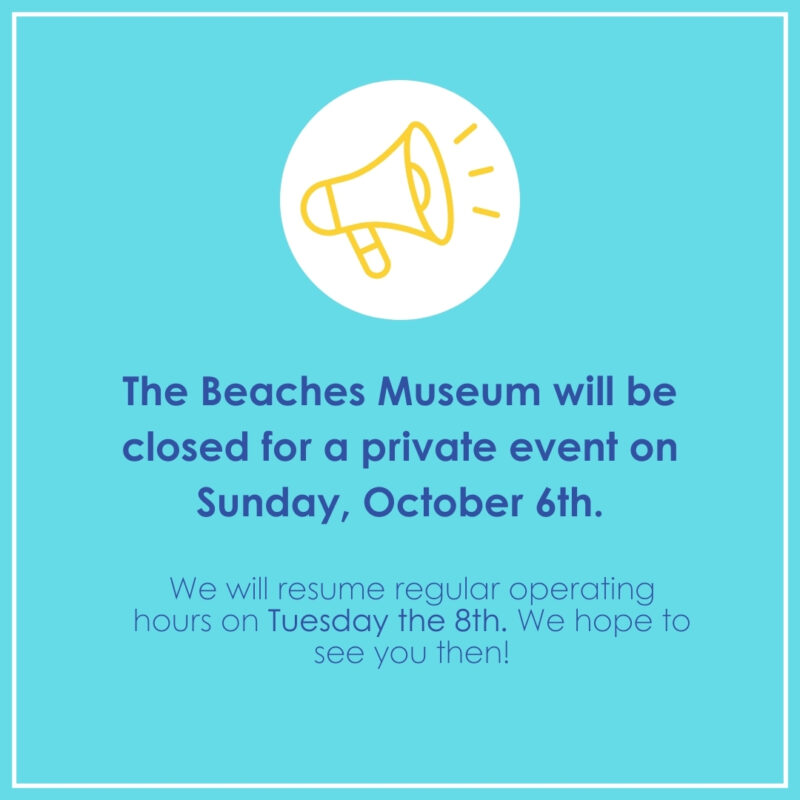
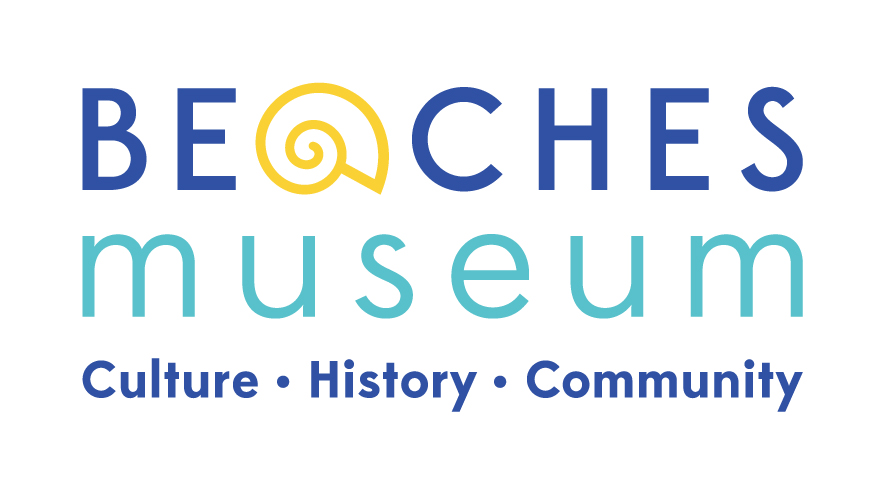
The Beaches Museum will be closed for a private event on Sunday, October 6th. We will resume regular operating hours on Tuesday the 8th.

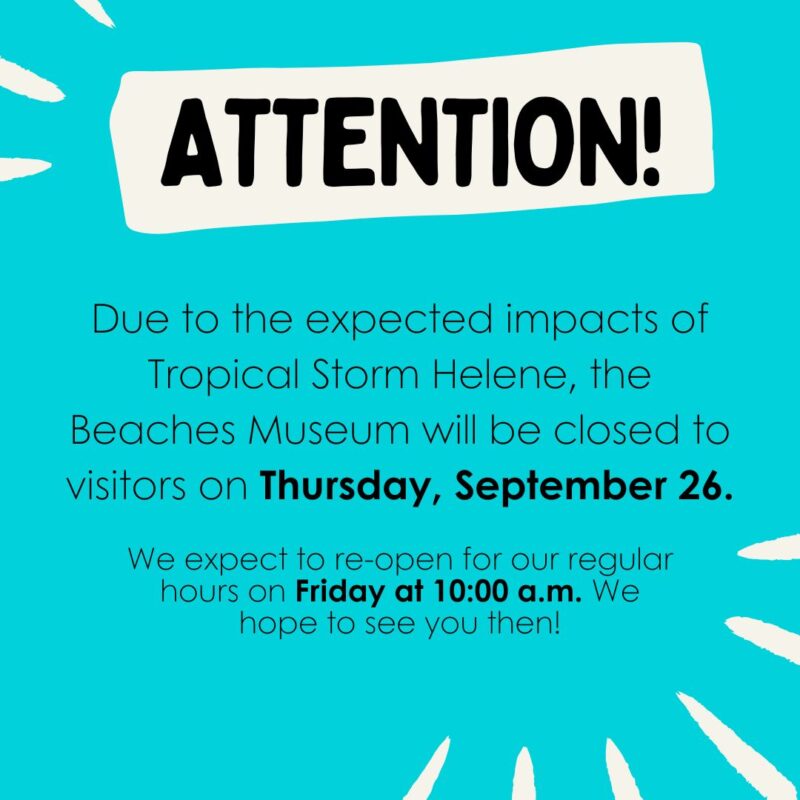
Due to the expected impacts of Tropical Storm Helene, the Beaches Museum will be closed to visitors on Thursday, September 26.
We expect to re-open for our regular hours on Friday at 10:00 a.m. We hope to see you then!
The Beaches Museum will be closing an hour early at 3:00 p.m. on Sunday, September 22nd, 2024 for a private reception. We will resume normal operating hours on Tuesday, September 24th! We look forward to seeing you!
By Catherine Peper
The Shane family was relatively new to Florida when Hurricane Dora hit on September 10th, 1964 with a 10 ft storm surge and 110 MPH winds. We moved from Canada in 1959. Neither we, nor NE Florida had any experience with a direct hit by a Cat 2 storm. On 8/28/64 we rode out tropical storm Cleo (downgraded from a Cat 3 hurricane) at our Beachcomber motel on the ocean between 4th and 5th avenue South. That would not be the case with Dora. We evacuated to the Hotel Mayflower downtown Jacksonville. With 7 kids, a dog named Rags and a cat, it was no small feat.
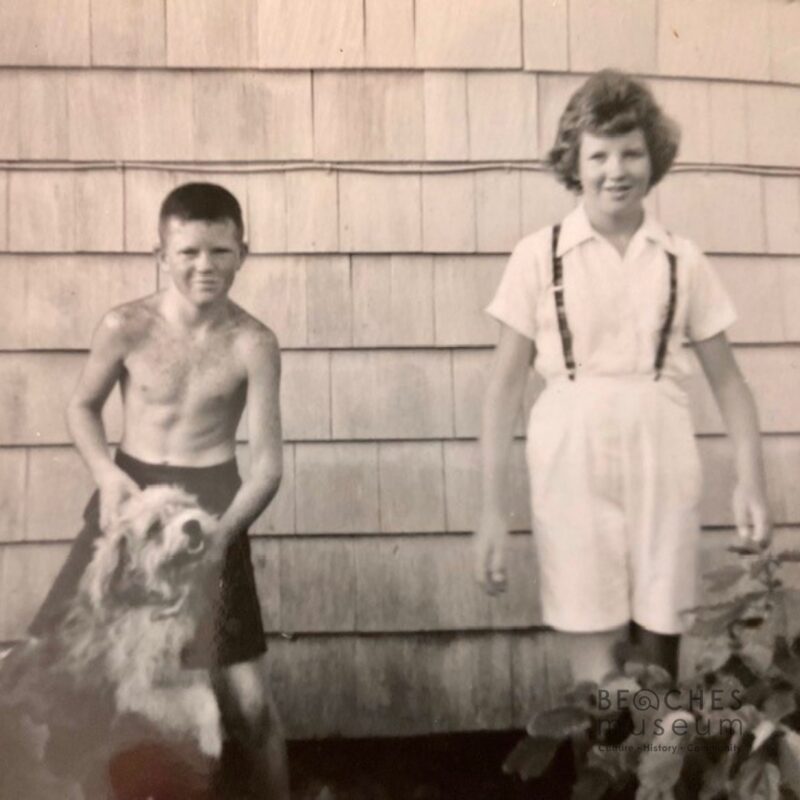
Our dog Rags, my brother Neil and sister Nancy. Rags, the wonder dog, got to be on TV and shake Lyndon B. Johnson’s hand in the same week of hurricane Dora.
At the final moment, we could not find the cat or the dog (Rags) but we had to go and get settled as the storm was already approaching. The kids cried about the animals so our dad returned to the beach to rescue them. He got Rags easily enough, but the cat fought him and ran off. The news cameras were airing an interview with him as he was one of the few people remaining on the Beach. We were visiting other Beaches residents in the hotel and saw dad on TV – more tears. Our mother, was watching a TV without sound in the next room and started screaming “he’s dead!” until someone turned the sound on.
We rode the storm out with little problems. Only a picture window exploding above a bed – glass everywhere. After the storm, we made our way back to the beach (power lines down and all). We were allowed early reentry to inspect our business. Had to park at the Homestead due to standing water. Watching for downed lines in murky sand water wasn’t possible. So we just had lots of strenuous reminders. Had to swim the final blocks as it was too deep for little kids. With the parents in the center, and a string of kids all holding hands, we made it to our house at 412 2nd street. All was good. We had water in the yard up to the top of the gas tank (a new diving platform).
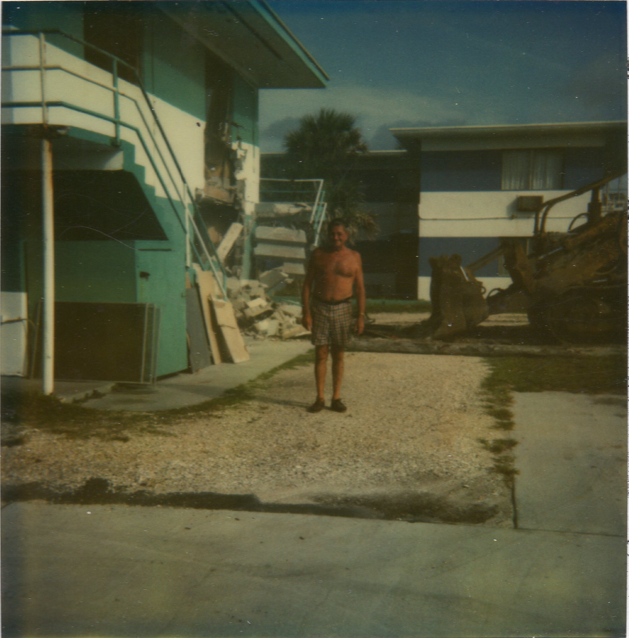
September 1964, after Hurricane Dora – Len Shane (Cathy Peper’s father) stands outside of the Beachcomber Motel on 411 First Street South, Jacksonville Beach.
The Beachcomber didn’t do as well. The pool was full of lawn furniture and tons of sand. The covered patio was in the pool. The rear motel wall had significant damage and 2 upper rooms collapsed. Sand, water, broken fencing and debris/appliances sunk on the beach everywhere. The best news? Our seawall was intact and did its job. Our neighboring motels (Silver Sea and Killis’s) lost most of their seawall. Killi’s Grocer never reopened. My dad said it was because the Beachcomber was “on holy ground” as it is where the original St. Paul’s Chapel stood before moving twice. I later confirmed this with Father Kelly at St. Paul’s catholic church.
Recovery
As with any natural disaster, you start out on your own for water, food, securing shelter. The escapee cat also made it home. We also found glasses everywhere from a bar down the street. Everyone remembers the loud helicopters all over the Beach taking pictures. The massive amount of sand lost on the beach and the demolished seawall was breathtaking. The pier was seriously damaged. Before, you could walk on the Seawall from at least 16th avenue South past the boardwalk was all but gone. Soon to be replaced by huge boulders.
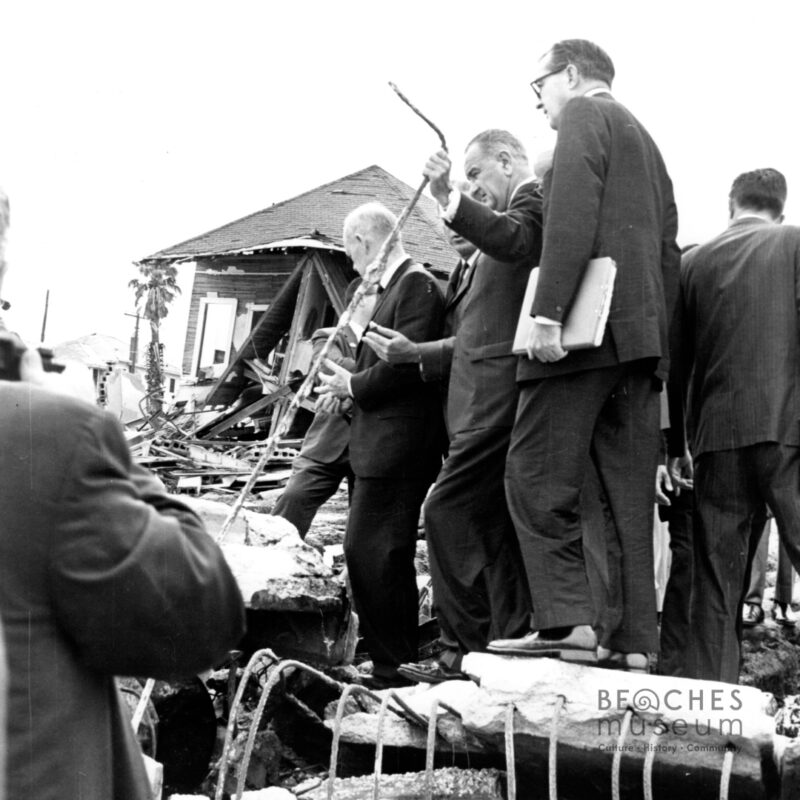
President Lyndon B. Johnson and his entourage surveyed the damage. When he got out of his convertible on 1st street around 16th Avenue, Rags took it as an invitation and walked right up to him, sat and put his paw up for a shake, which LBJ obliged. LBJ even asked Rag’s name. What a sight! The Beatles did a concert in Jacksonville shortly after the hurricane and had the audacity to complain of sour milk at their hotel.
Recovery was slow – weeks and months, a little patch of normal at a time. The first responders and support organizations like the Red Cross were amazing. We were lucky to have our gas back on early. It helped our neighbors who came over to heat meals. Neighbors helping neighbors. That’s a Beach thing! We moved to Rhode Island after Dora due to the loss of accreditation for Duval County schools and returned in 1967 so we missed most of the recovery.
The Beaches Museum will be closed for the holiday on Thursday, July 4th. We will resume normal operating hours Friday, July 5, 10:00 a.m. – 4:00 p.m.
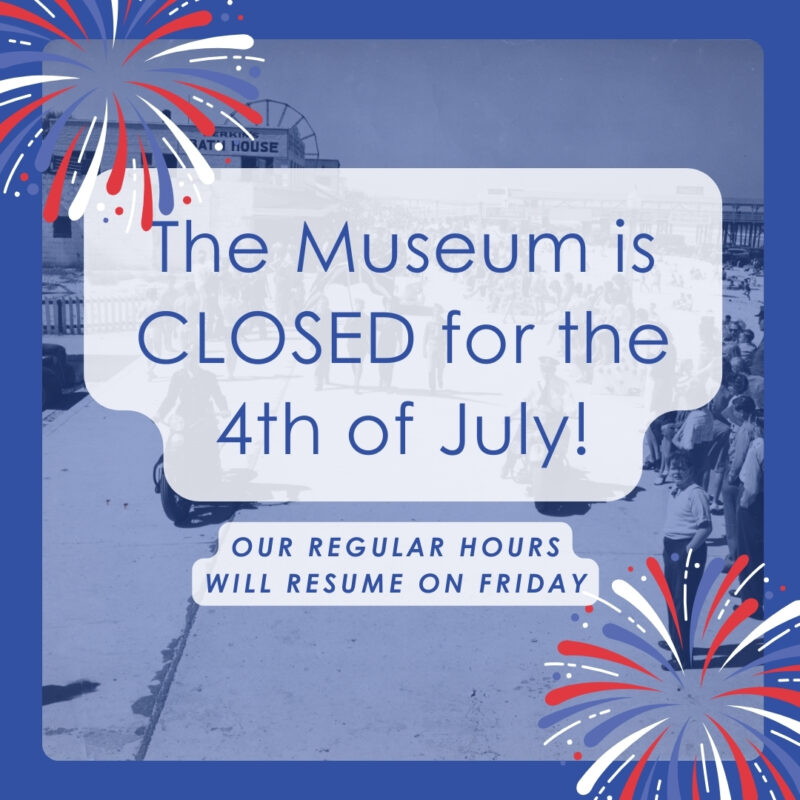
By Johnny Woodhouse
Faye Mickler Farace was curling her eyelashes in the girl’s bathroom at Fletcher High when one of her classmates burst in and said, “Oh, you have see this new guy, but I’m going to get him first.”
The “new guy” was Charles Harby “Buddy” Page Jr., a handsome transfer student from Landon High who had just moved to the Beaches in the fall of 1951.
“He was very good looking. I mean he was perfect,” recalled Farace, now 89. “All the girls were crazy about him. He dated a girlfriend of mine before he eventually asked me out at the end of our junior year. From then on, we started making our plans.”
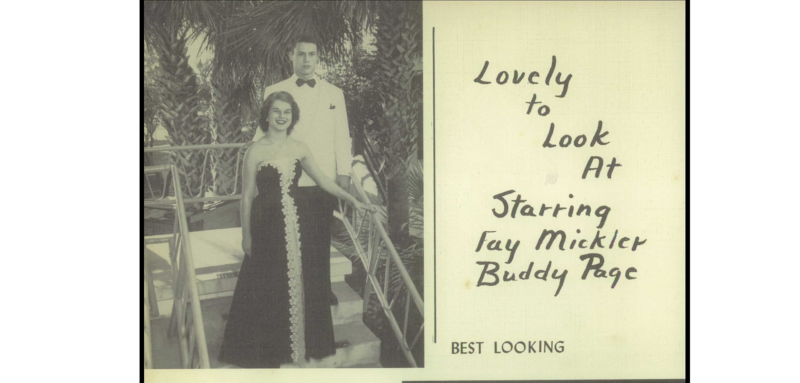
A gifted athlete, Page quickly caught the eye of Fletcher High athletic coaches, including football coach Ish Brant, who was coming off a 7-2-2 season in 1950.
Brant was always on the lookout for fleet-footed halfbacks to buoy his T-formation offense and the 6-foot-tall, 165-pound Page fit the bill.
“He worked out with weights long before any of us did,” recalled Lee Buck, who played with Page on Fletcher’s 1951 and 1952 football squads. “He was very muscular and would literally bounce off tacklers.”
Page broke into Fletcher’s starting football lineup midway through his junior year. The following spring, he helped the Senators win the 1952 Class A state track title as a point-scoring sprinter and relay runner.
Off the playing field, Page bonded with the likes of Tommy Hulihan, Henry “Preacher” Stout, Stacy Barber and Buck, all members of the Class of 1953.
“Tommy’s house on Laura Street [in Neptune Beach] was our meeting place,” said Buck. “His mother treated us like we were her own sons.”
“We were all very close,” added Farace, a former Fletcher majorette and Homecoming Queen. “Tommy and Buddy were the best of friends. It was a wonderful time back then. About the worst thing we did was smoke cigarettes.”
In 1953, Page and Farace were voted “Best Looking” in the yearbook.
“I wonder if that’s Fay Mickler driving up to the theater in that big limousine. She’s quite a celebrity with her titles of Miss America and Mrs. Charles Page Jr., that famous professional football player,” the yearbook’s “class prophecy” section predicted.
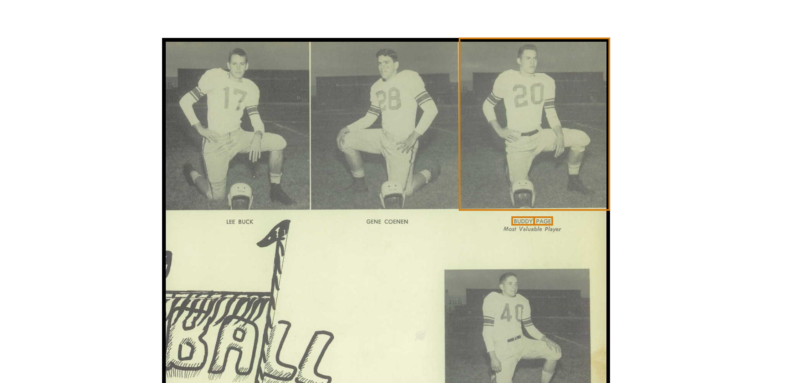
Fletcher opened the 1952 football season with a dominating 33-18 victory over Live Oak Suwanee. Page scored the game’s opening touchdown to get the visiting Senators rolling. It would be the first of nearly a dozen TD runs for the speedy senior halfback whose name and image appeared in sports pages on a regular basis.
“Page is fleet of foot and capable of getting away for sizeable gains,” wrote sportswriter Rocco Morabito of the Florida Times-Union before Fletcher’s first home game of a season, a 35-6 triumph over visiting Miami Tech.
A photo and caption proclaiming Page a “breakaway threat” appeared in the T-U sports pages, leading up to Fletcher’s game with Clearwater Central Catholic.
Heading into the season finale against Lake City on Dec. 14, 1952, Brant, Fletcher’s silver-haired head coach, told a T-U sportswriter, “Page offers a terrific backfield threat and if we need one or two yards, he’ll blast in there and get it.”
A week before the Lake City game, which was played at the Gator Bowl, Page and teammate Larry Adams, Fletcher’s top scorer and leading pass catcher, were both offered football scholarships to the University of Florida.
Adams (70 points) caught more than 10 TD passes for the Senators in 1952 and handled all the punting and extra-point kick duties.
Page (66 points), who averaged 8.5 yards per carry during the regular season, was Fletcher’s most valuable player.
“Coach Ish Brant is high in his praise of both boys, and feels they had a heavy hand in helping his team to a 9-2 season, the best record Fletcher ever has posted,” The Jacksonville Journal reported.
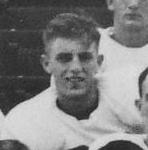
In mid-August 1953, Page and Adams, along with Fletcher’s Bert Bibby and John Veal, participated in the North-South All-Star Game at the Gator Bowl. The fifth annual event featured many of the best football players in the state, including Miami quarterback Lee Corso, who led the South All-Stars to a 33-6 win.
Adams caught an 18-yard pass in the game and Page was photographed carrying the ball while being chased by a pair of would-be tacklers. “The crowd was brought to its feet in the second quarter of last night’s all-star game as the North’s Buddy Page picked up eight years around left end,” a T-U photo caption read.
Page and Adams split up after the all-star game, with Adams heading off to play for the University of Florida and Page signing with in-state rival Florida State University.
When Page arrived in Tallahassee for the first day of drills on Aug. 24, 1953, FSU’s incoming freshmen class was considered “the best crop of newcomers ever lined up for the Seminoles.” In a team photo, Page is pictured sitting next to Fletcher grad Jimmy Messinese, one of FSU’s 34 returning lettermen.
Messinese, a backup linebacker, and Fletcher grad George Boyer, a starting defensive tackle, appeared in numerous games for FSU in 1953, but Page apparently left school before the football season began.
“His parents were pushing him to stay in college, but Buddy made up his mind to go into the Army,” Farace recalled. “His plan was to serve for two years and then play football for the University of Florida. He said we could live in some Quonset huts on campus that were reserved for married couples.”
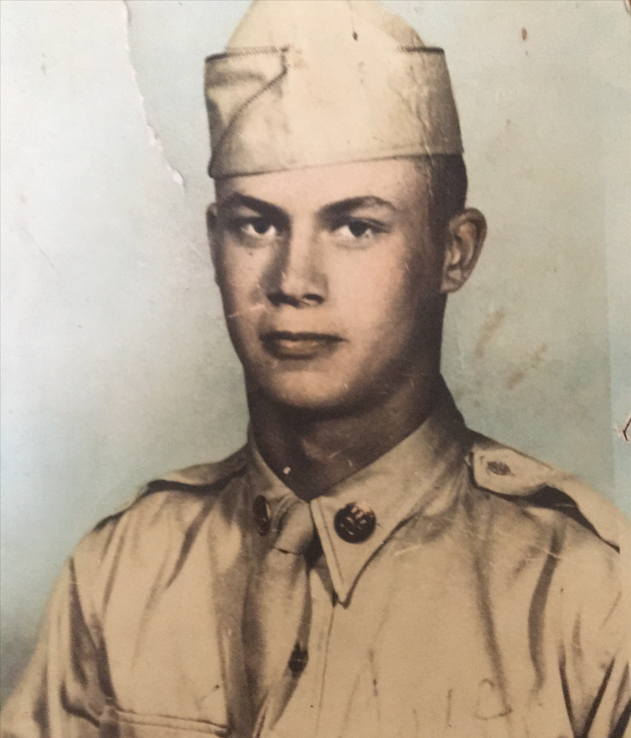
Page enlisted in the Army on Sept. 17, 1953, and completed basic training at Camp Gordon (now Fort Eisenhower) near Augusta, Georgia. From 1948-1975, Camp Gordon was home to the Army’s Military Police School.
After graduating from boot camp, Page was selected to attend 16 weeks of MP training at Camp Gordon’s Provost Marshal General Center. The training included eight weeks of advanced infantry tactics and eight weeks of training in the duties and techniques of being a military policeman.
“MPs are among the best trained, best uniformed and sharpest soldiers in the United States Army, and ready to answer the call from whatever spot on the globe it might come,” proclaimed a black-and-white training film produced at Camp Gordon in 1953.
For Page, answering the call meant reporting to the 8455th Military Police Company at Killeen Base, a remote Army installation in central Texas and one of three sites in the country for the storage and assembly of nuclear weapons during the early years of the Cold War.
“I remember driving up to Camp Gordon with Buddy’s parents, Harby and Roberta Page,” said Farace. “Once Buddy got to Killeen, we never saw him again.”
In 1947, Killeen Base, now known as Fort Cavazos and before that Fort Hood, was one of several ideal spots to store the nation’s nuclear arsenal, according to The Fort Hood Herald. “The idea was (the sites) were built inland to a point where, at the time, the Soviet Union didn’t have the capability to reach in and attack,” said Charles Lauer, formerly director of the Fort Hood Underground Training Facility, which once housed the atomic bomb.
According to Lauer, military personnel stationed at Killeen Base were forbidden to enter parts of the facility under Atomic Energy Commission control. “At the time, when the country’s nuclear arsenal was in its infancy and bombers were the only reliable delivery system, Killeen Base operated on a complex set of protocols,” Lauer said.
Dotted with ammunition bunkers, concrete guard towers and razor-wire fences, Killeen Base, also known by its code name Site Baker, was off limits to visitors and area residents. “Security was extremely tight, producing many stories and rumors about what went on inside,” according to another published report.
One rumor involved a couple of deer hunters who accidentally strayed onto the base. The hunters were reportedly arrested by MPs and held until it was determined that they were not communist spies.
“The only way you can leave here is if you go crazy or shoot someone and then they ship you out,” Page told Farace in a 1954 letter. “I can’t leave this base no matter what. I won’t leave here until I’m out of the Army.”
When Page arrived at Killeen Base in January 1954 at age 18, he quickly learned that leaves were rarely granted, and transfers were out of the question.
“I went to the CO about going into the Airborne, but found out I couldn’t,” he told Farace in another letter. “The most important thing to me is having you with me, so let me know when you want to get married. I will start working things out. Let me know what kind of ring you want or if you want to wait until I come home. Love you forever, Buddy.”
On July 1, 1954, a U.S. Army plane crashed during a training flight at Kelly Air Force Base, in San Antonio, Texas, killing two men, including John McBride, a 20-year-old student pilot and a promising running back who played on Alabama’s 1953 Southeastern Conference championship team.
Page, who turned 19 on Feb. 3, 1954, was also cut down in his prime that July after being fatally shot while on vehicle patrol in a classified area of Killeen Base.
According to a newspaper report, Page, who was riding as a passenger in a patrol vehicle, was shot in the chest by a sentry on July 4, 1954, after allegedly failing to answer the sentry’s challenge.
“The deceased fell from the vehicle and died shortly thereafter approximately 20 feet from the vehicle,” a report said. The MP driving the patrol vehicle was not injured. At the time, military officials said the sentry would be court martialed.
When he was shot, Page was dressed in Army fatigues and carrying only a pocketknife and an MP whistle, according to medical records.
“Buddy reportedly told the guard, ‘You know who I am,’ but the guy still shot him,” said Buck. “His death was such a shock and a senseless waste of life.”
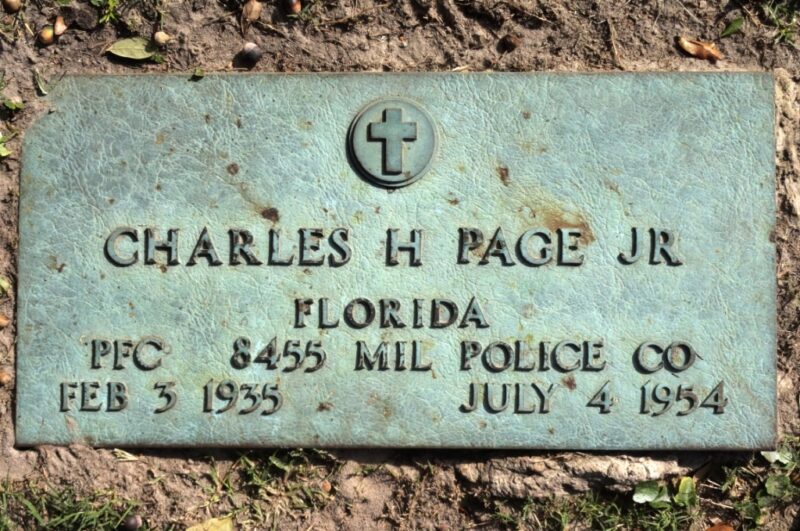
Farace was returning home from a trip to Daytona Beach when the tragic news reached her.
“My mother met me outside our home on Mickler Road and said, ‘Buddy has been killed.’ I don’t remember much after that,” Farace recalled. “Somebody took me to Buddy’s house, and I stayed in a spare bedroom for a couple of days waiting for the train to bring his body back to Jacksonville. To this day, I don’t know how we got through it.”
Two MPs from Page’s unit, Pfc. James L. Morris and Sgt. Clarence E. Van Nest, accompanied the steel casket to the Jacksonville train station and served as official military escorts during the funeral. Buck said he and some of Page’s closest friends took turns standing vigil at the funeral home after Page’s remains were prepared for viewing.
A memorial service was held a few days later with the Rev. Malcolm B. Knight, pastor of Southside Baptist Church, and the Rev. Henry Stout of Community Presbyterian Church in Atlantic Beach, presiding. Page’s remains were buried at Jacksonville’s Oaklawn Cemetery with full military honors.
Four days after Page was killed, U.S. Sen. George A. Smathers of Florida requested a full investigation of the shooting. “Smathers said he acted immediately after receiving the request from Page’s father,” according to a front-page article in the Florida Times-Union. “Sen. Smathers said he has also called the Judge’ Advocate General’s Office and was assured by Major Gen. Albert C. Smith that the investigation would be followed through by that office,” the newspaper said.
On June 28, 1955, U.S. Rep. Charles Bennett of Jacksonville introduced a bill (H.R. 7074) in the U.S. House of Representatives “for the relief of Mr. and Mrs. Charles H. Page” in the sum of $25,000.
The bill was referred to the House’s Judiciary Committee and forwarded to the Office of the Quartermaster General, which was directed to prepare a report for Congress.
In March 1967, Bennett’s bill was finally passed in the U.S. House and sent to the U.S. Senate for consideration. By then, the death benefit had been reduced to $14,430, according to published reports.
It’s unclear whether Page’s parents ever saw any compensation. Roberta Page died in 1969, the same year Killeen Base was officially decommissioned as a nuclear storage bunker. Charles Harby Page Sr., who worked for the U.S. Corps of Engineers, passed away in 1973.
“Buddy’s parents never accepted the Army’s explanation for what happened to their son,” Buck said. “His death destroyed them. He was their whole life.”
Farace, who went on to marry twice and has seven children and 10 grandchildren, keeps a portrait of Page in a dresser drawer.
“Even after Buddy was gone, his parents would continue to visit me and my parents,” Farace said. “My parents adored Buddy. His death was a nightmare for all of us.”
Pamela Blalock recorded 578 hours last year, more than any other volunteer at the Beaches Museum in 2023. We are excited to honor her with our first-ever Volunteer Spotlight! We took a minute to sit down with Pam and ask her some questions about her time with the museum. Read on for the full interview!
Interviewer: You’ve got the most volunteer hours. Congratulations on getting all of those hours!
Pam: Thank you.
What did you spend your time doing before committing so much time to volunteering here at the Beaches Museum?
I was working before I retired.
What did you do for work?
I was the HR Manager for the National Air and Space Museum at the Smithsonian.
Do you have a favorite collections item, and if so, what is it?
Ooh… I think I like the Foreman’s House the best.
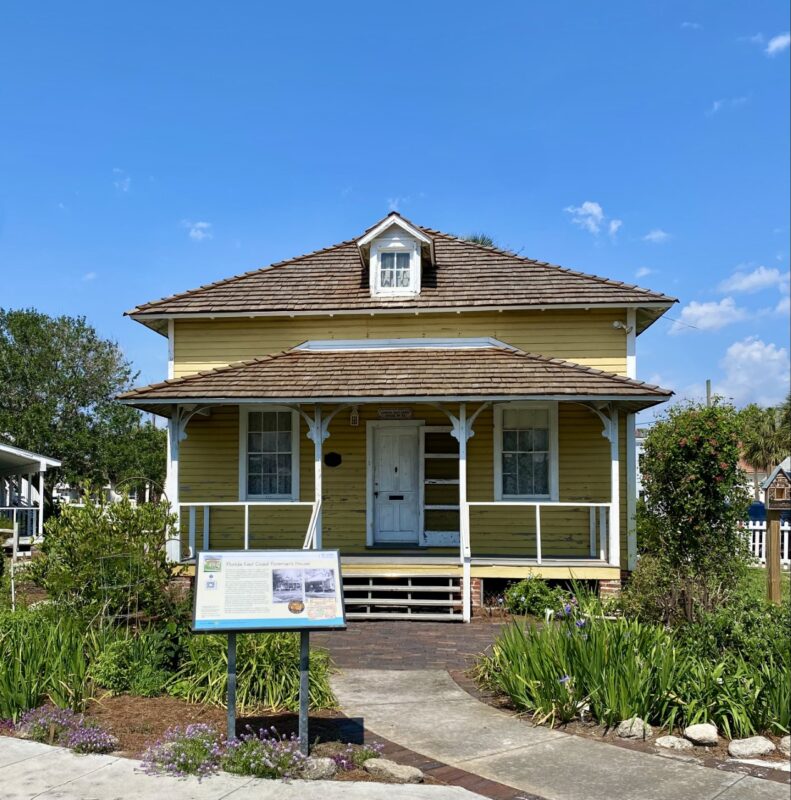
What do you like most about it?
I find the kitchen fascinating, and, um, I don’t know–the adult potty chair. [laughs]
My next question was, do you have a favorite place in the History Park, but I guess–
Oh, well that answers that one, yes.
Do you have a favorite… plant? In the garden?
Oh, I don’t know one plant from another. If it’s not a rose, I don’t know what it is. [laughs]
What has been the most rewarding aspect of volunteering here for you?
Just meeting new people. Getting to make friends and meet people from all over.
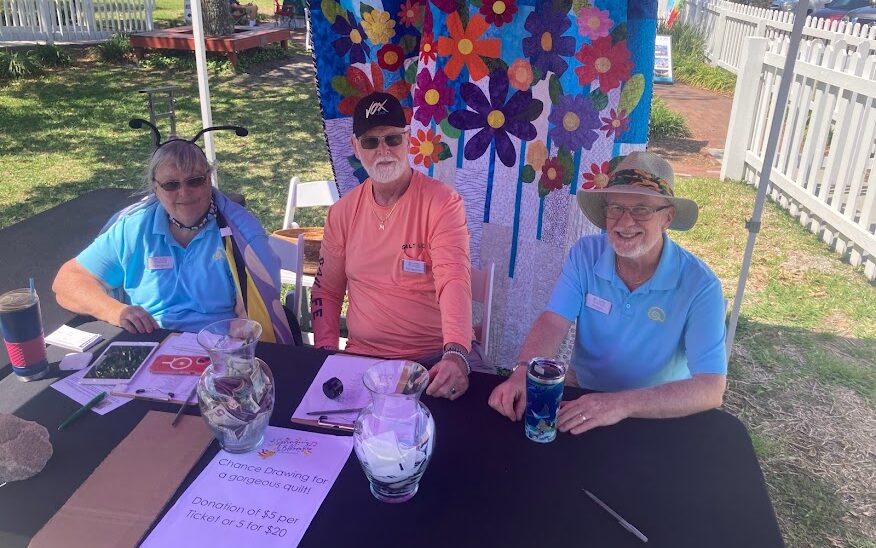
Is there a moment or memory that stands out about your time here?
Other than Kate? [laughs]
Do you have any advice for new volunteers?
Just enjoy your time. I mean, I enjoy it. The reason I keep doing it is because I enjoy it–and it gets me out of the house. It gives me something to do as a way to make friends. That’s why I started here.
You have made lots of friends here!
Well, and I started out at the Smithsonian as a docent doing dinosaur tours! So I was kind of–that gave me something to do. It was just a natural flow once I retired and moved down here.
Did you have a favorite dinosaur at the Smithsonian?
Yeah, the parasaurolophus.
I’ll have to look up how to spell that one.
I just love the name!
If you opened your own museum, what would it be the museum of?
Probably dinosaurs. [laughs]
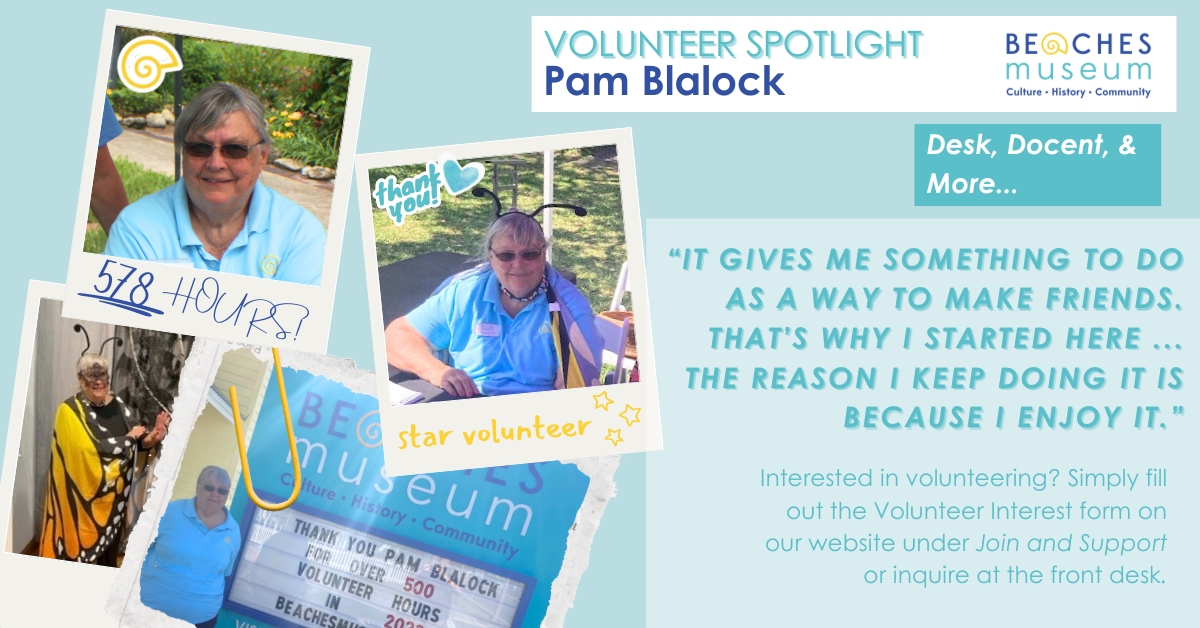
Interested in volunteering? Simply fill out our the form below or ask for an application at the front desk!
The Beaches Museum will be closed on Sunday, May 26, 2024 for a private special event. We will resume normal operating hours on Tuesday, May 28! We look forward to seeing you!
Keith did his duty and then some.
By Johnny Woodhouse
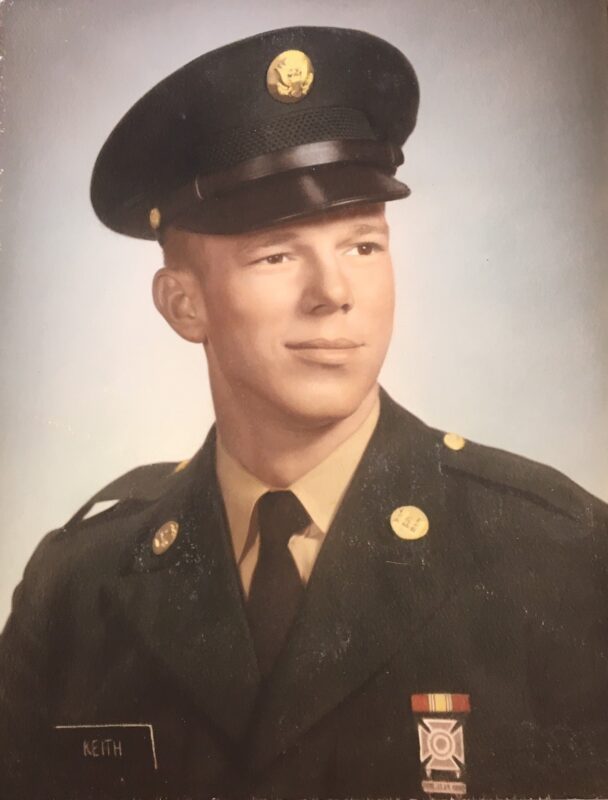
After completing a 12-month tour of duty in Vietnam, Jimmie Keith had earned the right to return to the United States in the summer of 1969.
But like several men in his Army unit, the 19th Combat Engineer Battalion, Keith, a Jacksonville native who grew up at the Beaches, extended his overseas tour for another 90 days.
“Morale continues to be high in the battalion, as indicated by the high extension rate, attitude, appearance and accomplishments of the men of the 19th,” said Lt. Col. Gilbert Burns, the unit’s commanding officer, in a quarterly operational report dated April 1969.
Army engineers like Keith played a vital role in the Vietnam War.
Besides helping to keep supply lines open, they were responsible for a wide range of tasks, including building and maintaining roads, bridges, and airfields.
In 1969, the primary mission of Keith’s unit was to upgrade and pave a 50-mile stretch of QL-1, a national highway and the major route between Saigon and Hanoi.
Nicknamed the “Street Without Joy,” QL-1 was “a very dangerous, contested, expensive and memorable stretch of road,” recalled Frederick J. Smith, a company commander with the 19th Engineers from December 1968 to October 1969 and now a historian with the 19th Combat Engineer Battalion Vietnam Association.
“This was a hostile area, and as engineers not attached to an infantry division, we had to provide our own defensive security, 24 hours a day. It was and still is a remote corner of Vietnam.”
The 19th Engineers experienced their fair share of misery and heartbreak in Vietnam.
Between 1965-1970, 105 soldiers assigned to the unit died overseas and more than 400 others were wounded. Only one other combat engineer battalion in Vietnam suffered more casualties.
Wanted to finish the job
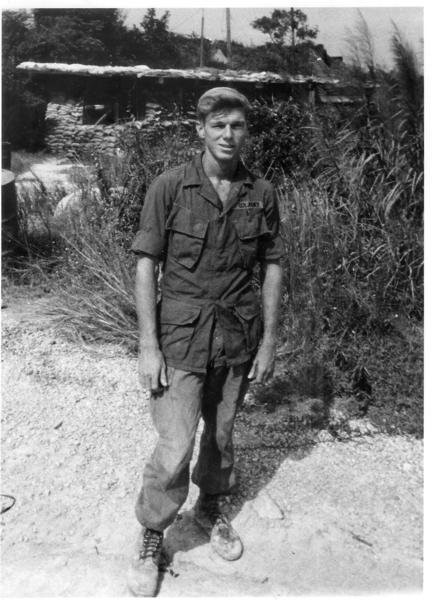
A quarry specialist, Keith was assigned to the 73rd Engineer Company, which was responsible for producing thousands of cubic yards of crushed rock and hot mix asphalt used for road paving projects.
The 73rd operated up to five rock crushers at the Tam Quan Quarry, including a pair of 225-ton crushers capable of producing more than 30,000 cubic yards of crushed granite rock of all sizes. Rock crushers were a vital link in the production of concrete.
“At Tam Quan, like any military quarry in the Republic of Vietnam, progress is measured in tons of rock and asphalt, and miles of roadway,” wrote Army Specialist Mike Barry in the summer of 1969.
“Its quarrymen blast rock, haul rock, crush it, heat it, spread it, and see it in their dreams at night. Their job is one of the dirtiest, most boring an engineer does, but it is one the of most important and they take it very seriously.”
The 73rd “operated one of the finest construction support facilities in Vietnam,” according to its commanding officer, and the unit, which was divided into five platoons, was nominated for the Itschner Award, an annual honor presented to the Army’s most outstanding engineering company.
With more than 60,000 pounds of explosive used in mining operations, quarry work was also inherently dangerous.
In March 1969, the 73rd added a night shift at the rock quarry when a nearby airfield resurfacing project was added to their list of combat support missions.
The 73rd resurfaced the airfield at LZ English in 22 days but kept the night crew going at the quarry to ensure that the battalion’s year-long highway paving project remained on schedule.
“He liked being in the military,” said Patricia Boatwright, one of Keith’s four sisters. “He wanted to finish the job.”
During his spare time, Keith managed the Enlisted Men’s Club at his dusty hilltop firebase situated about four miles from the South China Sea.
Loved working with his hands
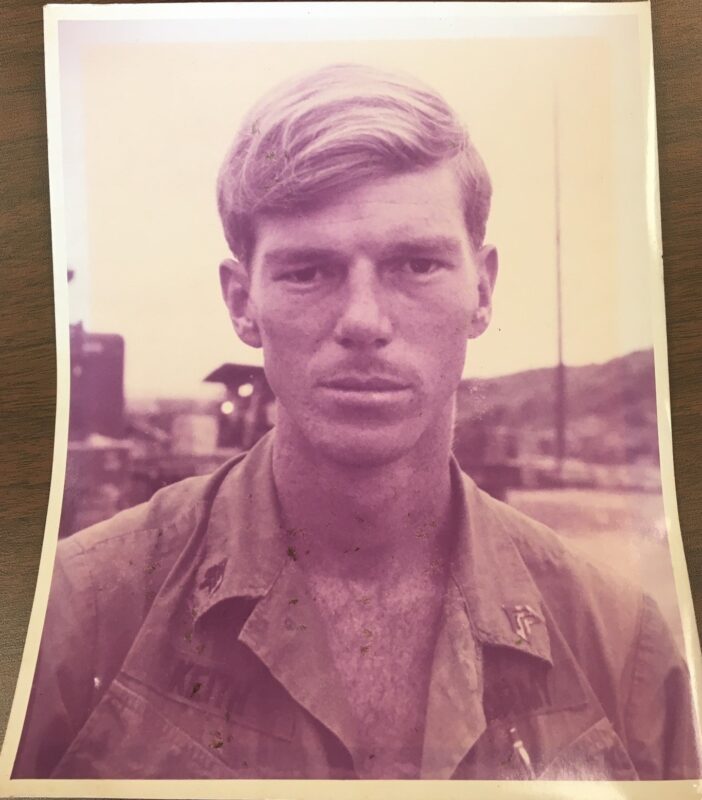
In 1967, when Keith joined the Army, there were more than 35,000 combat engineers in Vietnam.
A year before he would join their ranks, Keith spent a year in Germany serving with another Army unit.
“He liked both the country and the people with the exception of the cold German winter,” wrote Helen “Patches” Musgrove in her 1986 book, “Vietnam: Front Row Center.”
“He says he’d like to visit there again just as a tourist.”
A war correspondent for The Jacksonville Journal, Musgrove interviewed Keith and another combat engineer from Jacksonville, Eddie Forrest, at their base, LZ Lowboy, in May 1969.
“Jimmie was a very pleasant young man who admitted that he had matured and altered his ideas about life considerably since joining the Army and coming to Vietnam,” said Musgrove, a former registered nurse who covered the war for more than six years.
“He had definitely made up his mind that he was going to complete his high school education when his Army duty was over, and he would like to return to his old job after he earned his diploma.”
When he turned 16, Keith dropped out of Fletcher Junior High to work fulltime for an Atlantic Beach business that made fishing tackle.
“He loved working with his hands,” recalled, Keith’s younger sister, Shirley Greenlaw, who attended Fletcher High in 1967.
“He used to ride to work on a motor scooter.”
Keith spent two years making fishing tackle at the Levy Road tackle shop before enlisting in the Army with Greenlaw’s late husband, Curtis.
Enlisting in the Army meant three years of active-duty service but entitled Keith to his choice of military occupational specialty. He and Greenlaw both chose the same branch of service – Army engineers.
Never asked for anything in return
During his chance meeting with the war correspondent in the spring of 1969, Keith reminisced about his mother’s home cooking and the North Florida beaches where he grew up.
He also confided in the correspondent that he had recently received a “Dear John” letter from a girl back home and was badly shaken by it.
“However, we discussed it and I believe I was able to help him accept what he could not change,” Musgrove said. “He was due home in another month but decided to extend in Vietnam.”
Soldiers who extended their tours of duty in Vietnam qualified for the Army’s Early Out Program, which basically relieved them of any further active-duty service once they returned to the U.S.
When Keith first received orders for Vietnam, he tried to keep it a secret from his family.
“He didn’t want his mom to worry,” said Shirley Greenlaw. “Jimmie was always her baby.
“But he ended up telling me where he was going and said, ‘I don’t want to go over there, because I won’t come back.’”
On Aug. 8, 1969, Keith’s worst fears, and those of his family members, came true.
The 21-year-old Army specialist was fatally injured at the quarry while working on a piece of heavy equipment known as a jaw crusher. He had less than a month to go in Vietnam.
Four days later, a memorial service for Keith, including a 21-gun salute, was held at LZ Lowboy, where he was stationed for more than 14 months.
“We must admit to ourselves that he is gone, but we will never forget him,” said members of the 73rd’s quarry platoon in a letter addressed to Keith’s family.
“He was one of those guys who was always happy, no matter how bad the scenario was. If someone on the team was down in the dumps, Jim would bring him out of it. That was the type of person he was – always giving and never asking anything in return.”
Pat Boatwright said she received a letter from her little brother about a month before his fatal accident.
“I didn’t open it for about a year and when I finally did it broke my heart,” she said.
Shirley Greenlaw said she was living on an Army base in Virginia when she received the sad news.
“If there was something wrong with a rock crusher, Jimmie would be the first one to try and fix it,” she said. “He was always a very careful person.”
Bronze star recipient
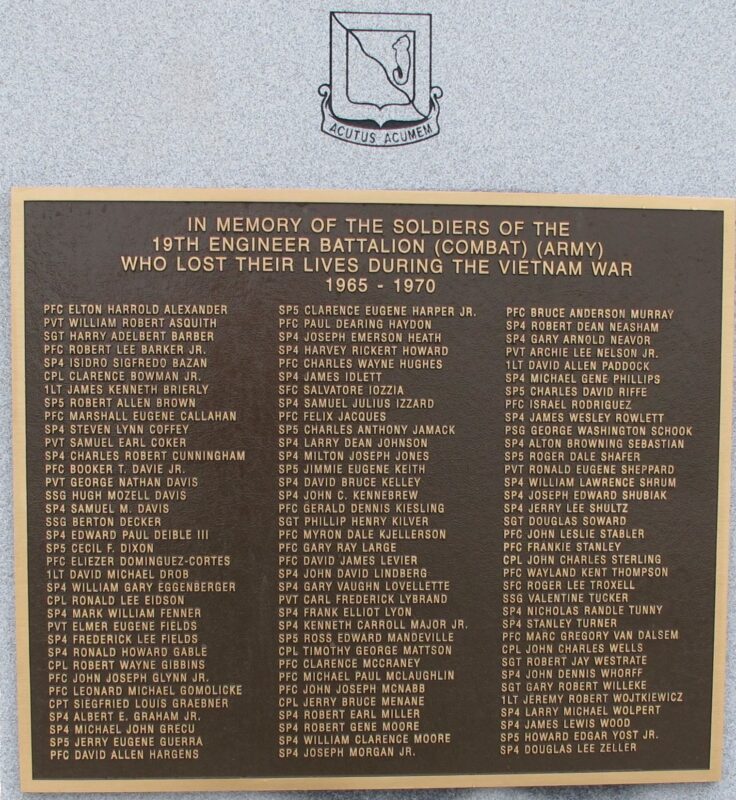
Keith’s remains were returned to Jacksonville Beach and interred at Warren Smith Cemetery.
Musgrove attended a memorial service for Keith at the Atlantic Beach Pentecostal Holiness Church and mentioned it in her Aug. 20, 1969, Jacksonville Journal column.
“I looked around me in the little church and noted that the military honor guard and pallbearers all wore Vietnam War campaign ribbons on their chest,” she said. “The type of men who came there to join in the last goodbye told me much about what sort of person Jimmie really was. … It was a silent testimony that Jimmie was a man’s man who made deep and lasting friendships.”
In February 1970, the Army presented Keith’s parents with a posthumous Bronze Star Medal for their son’s meritorious service in Vietnam. Keith’s other military decorations included the Good Conduct Medal, Vietnam Service Medal with one Bronze Service Star and the Military Merit Medal, which is the highest decoration bestowed to enlisted personnel by the Republic of Vietnam.
The 73rd Engineer Company received a Valorous Unit Award (VUA) for its heroic actions in Vietnam. The VUA is the second highest decoration an Army unit can receive after the Presidential Unit Citation.
“The men of the 19th Engineers were smart, well trained, hard working and brave,” said Smith, the former 19th company commander, and a 1965 West Point graduate.
“They always showed initiative and worked well as a team. I remain proud to have served with them and proud to say I was a combat engineer in Vietnam.”
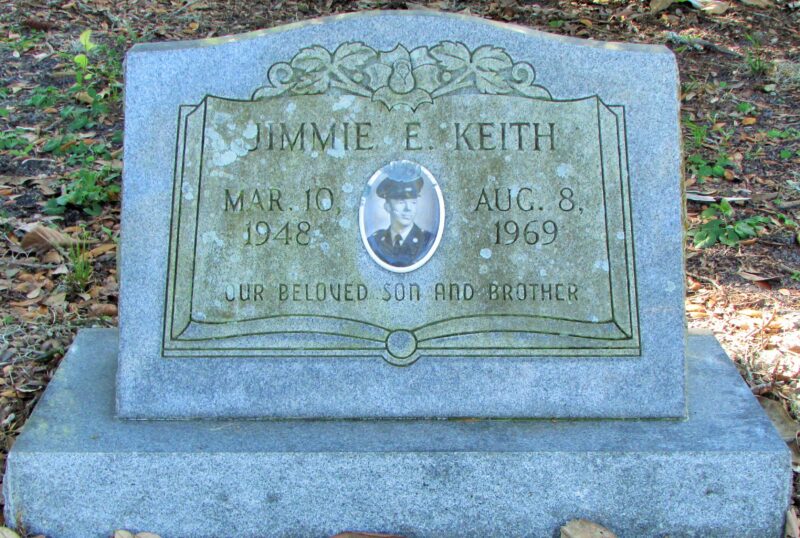
A street sign has been erected in Keith’s honor in the 2100 block of 9th Avenue North in Jacksonville Beach. His name also appears on the Veterans Memorial Wall in Jacksonville and on Panel 20W, Line 113 of the Vietnam Veterans Wall in Washington, D.C.
Johnny Woodhouse has served as a guest curator, cemetery tour guide and frequent contributor to the Beaches Museum since 1999. A retired journalist who spent more than 30 years in the newspaper business, he is currently a freelance healthcare writer and budding Wikipedian.
The Beaches Museum will be closed Sunday, March 31. We will reopen for our normal hours Tuesday, April 2, 10:00 a.m. – 4:00 p.m.
